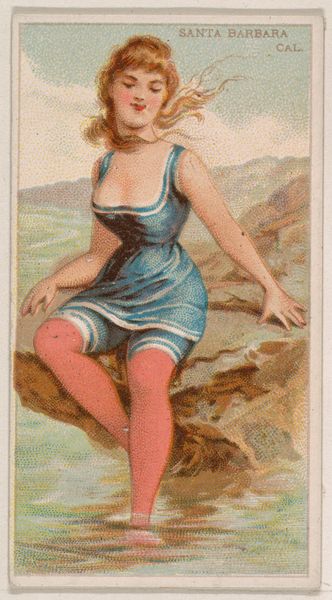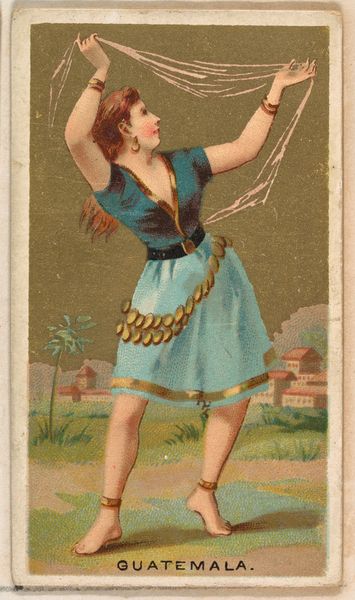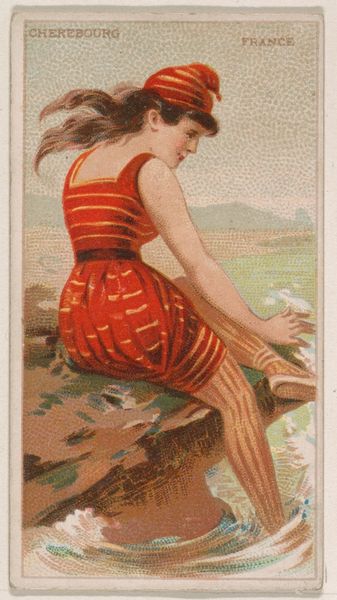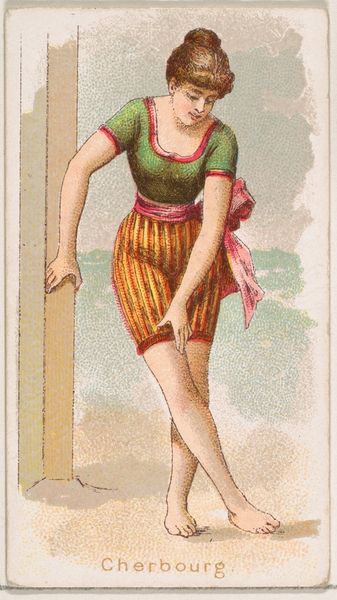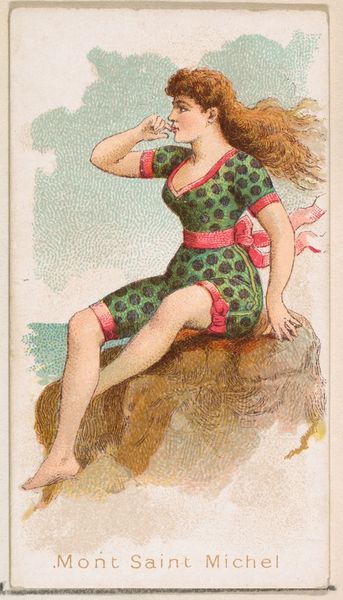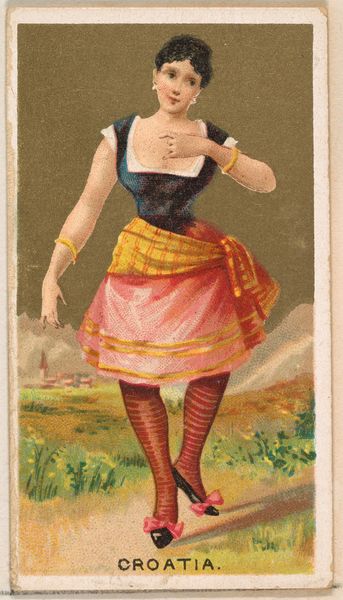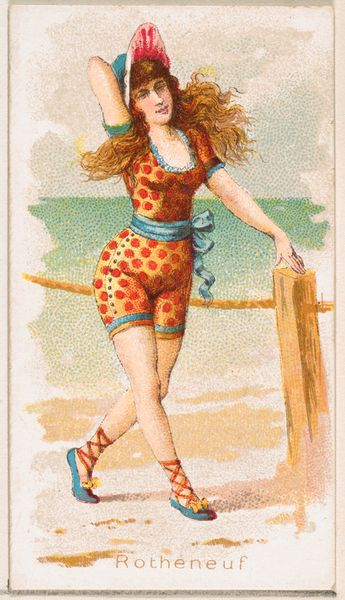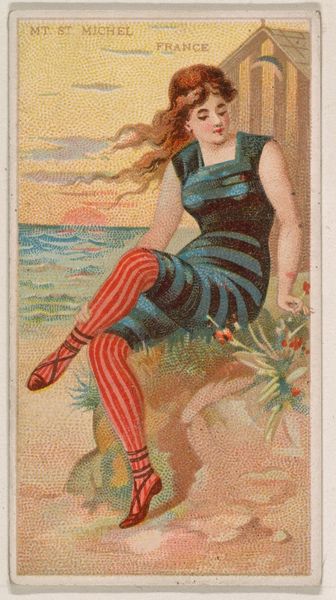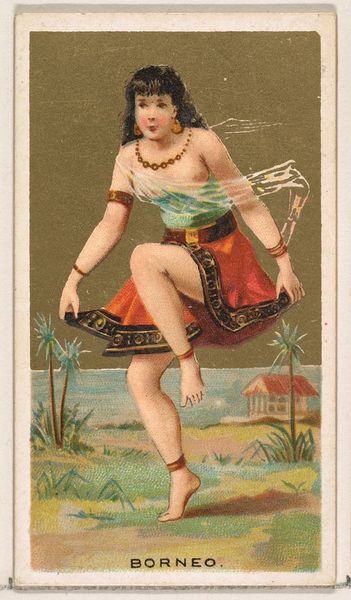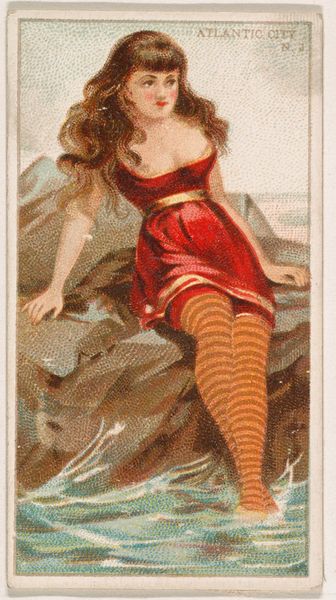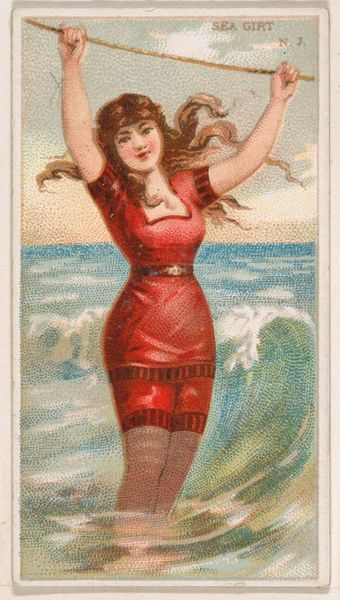
Nahant, Massachusetts, from the Surf Beauties series (N232), issued by Kinney Bros. 1889
0:00
0:00
drawing, print, photography
#
drawing
# print
#
photography
#
coloured pencil
#
genre-painting
#
erotic-art
Dimensions: Sheet: 2 3/4 × 1 1/2 in. (7 × 3.8 cm)
Copyright: Public Domain
Curator: The piece before us is from 1889, titled "Nahant, Massachusetts, from the Surf Beauties series (N232)", published by Kinney Bros., and the artistic techniques are drawing, printmaking, and photography all at once. Editor: I am immediately struck by the overt commercial exploitation of the female form; her red stocking and cap stand in contrast with her otherwise barely-there beachwear. How much agency did this model possess over her representation? Curator: Well, considering it's a tobacco card, these cards were meant as advertisements tucked into cigarette packs. So, naturally, we have to consider it from the viewpoint of commodity culture and consumption of both tobacco and female images. There's an entire politics of imagery here. The Kinney Brothers Tobacco Company mass-produced these images. Editor: Precisely! The "Surf Beauties" series objectifies the woman, making her a spectacle. She is an accessory to sell a different kind of product entirely. This portrayal reduces her value, impacting socio-political views regarding women’s place in the public sphere, right? I find the positioning deeply troubling. Curator: The fact that this falls into both 'genre-painting' and 'erotic-art' further muddles the narrative, showing that what was widely consumable blurred these definitions considerably, highlighting the socio-economic conditions that allowed such content to circulate, as well as its appeal. Editor: And how that imagery continues to impact the way we negotiate womanhood and objectification to this day. How did they represent real bathing habits versus ideal ones in the Victorian period, I wonder? It certainly gives some insights into beauty and consumerism back then! Curator: Indeed, exploring this historical artifact invites questions about the prevailing socio-political structures of that era, in how women were seen and depicted. I think we've managed to uncover that there are multiple layers. Editor: Absolutely, it forces us to really contemplate power structures and beauty standards as it existed in 1889 and even now.
Comments
No comments
Be the first to comment and join the conversation on the ultimate creative platform.

